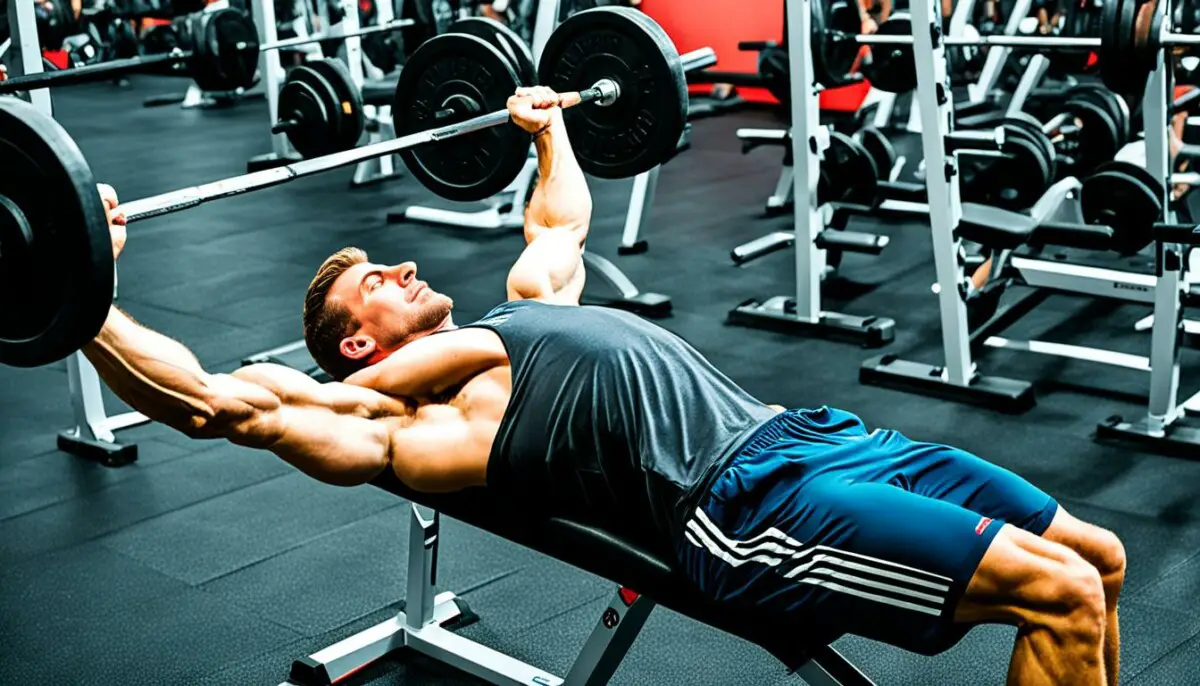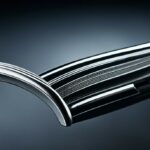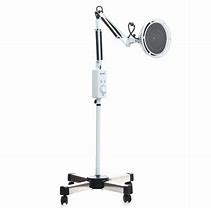Last Updated on 3 months by Francis
The incline barbell bench press is a fundamental exercise for developing upper body strength and promoting muscle growth in the chest, shoulders, and triceps. Whether you’re a novice lifter or an experienced fitness enthusiast, mastering the proper technique of this compound movement is crucial for maximizing your workout results.
In this article, we will provide expert tips and guidance on how to perfect your incline barbell bench press technique. From setup to execution, we’ll cover all the essential elements to help you achieve optimal muscle activation and avoid common pitfalls.
Contents
Key Takeaways:
- Mastering the technique of the incline barbell bench press is essential for upper body strength and muscle growth.
- Proper form and technique are crucial for targeting the intended muscles and reducing the risk of injury.
- Incorporating variations of the incline bench press can provide additional challenges and target different muscle groups.
- Consider the specific needs of different athletes when incorporating the incline bench press into their training routines.
- Consistent practice and expert guidance are key to achieving your fitness goals and improving overall upper body strength.
Variations of the Incline Barbell Bench Press
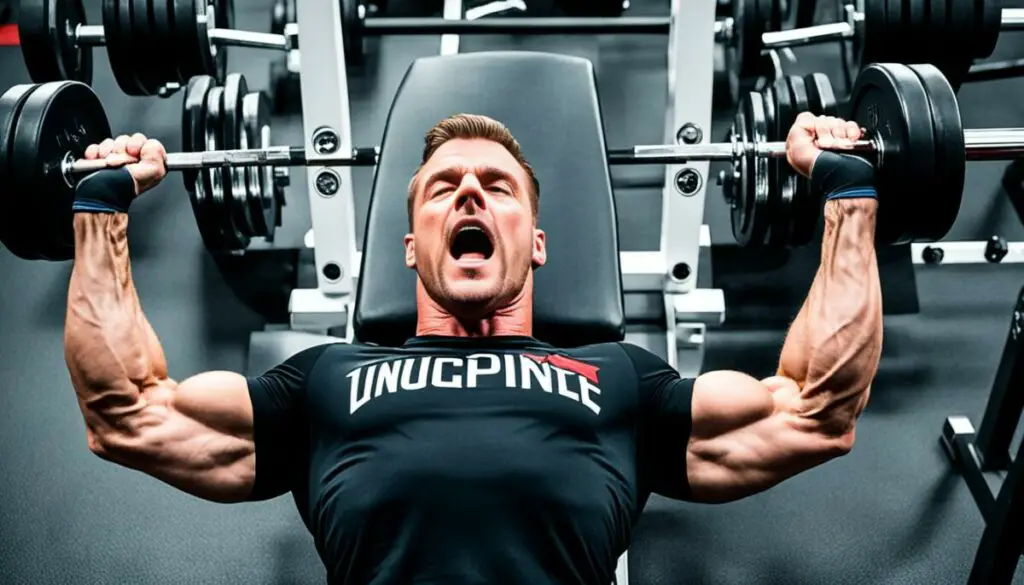
If you’re looking to spice up your chest workouts and take your strength training to the next level, incorporating variations of the incline barbell bench press is the way to go. These variations provide new challenges and target different muscles within your chest, triceps, and shoulders, helping you achieve optimal muscle building and strength gains.
Here are three popular variations of the incline barbell bench press:
- Using Dumbbells: Instead of a barbell, hold a dumbbell in each hand and perform the pressing motion. This variation helps improve stability and can activate more muscle fibers in your chest.
- Unilateral Pressing: Perform the exercise using only one arm at a time. This variation helps identify and correct strength imbalances between your left and right sides, leading to better overall muscle symmetry.
- Changing Speed: Vary your lifting tempo by adjusting the speed of the movement. For example, perform slow eccentric (lowering) reps to increase time under tension and promote muscle growth, or try explosive concentric (lifting) reps to enhance power and explosiveness.
By incorporating these incline bench press variations into your routine, you’ll not only keep your workouts fresh and exciting but also target different muscle fibers and stimulate enhanced muscle growth. Don’t be afraid to experiment with different variations and find what works best for you.
The Importance of Variations
“Variations in your workout routine play a crucial role in muscle adaptation and growth. By challenging your muscles in new ways, you continue to stimulate them and prevent plateaus.”
Switching up your exercises and introducing variations like those mentioned above keeps your body guessing and prevents your muscles from adapting to the same movements. This constant challenge helps promote muscle building and strength gains over time.
Remember, always prioritize proper form and technique when performing any exercise variation. Start with lighter weights and gradually increase the load as your strength improves. Consulting with a certified trainer or fitness professional can also provide valuable guidance and ensure you’re executing the variations correctly to maximize their benefits.
Proper Form and Technique for the Incline Barbell Bench Press
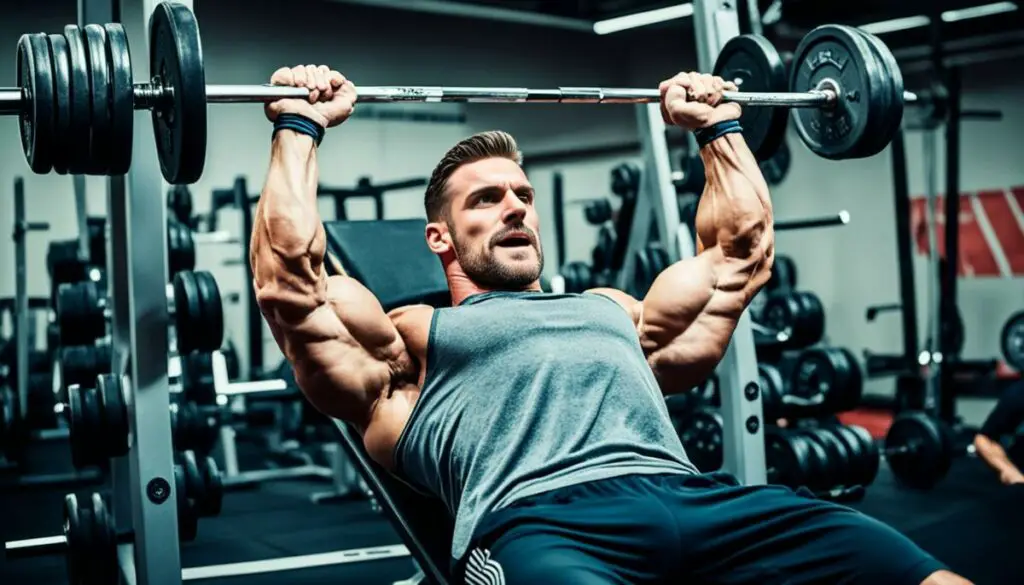
Mastering the proper form and technique is crucial for maximizing the benefits of the incline barbell bench press. Performing this exercise with correct form ensures optimal muscle activation and reduces the risk of injury. Follow these step-by-step guidelines to master the incline bench press technique:
- Set up: Start by adjusting the incline bench to a 30-45 degree angle. Position yourself on the bench with your feet firmly planted on the ground. Maintain a natural arch in your lower back.
- Grip width: Grasp the barbell slightly wider than shoulder-width apart, with your palms facing forward. Ensure that your wrists are aligned with your forearms.
- Lowering the barbell: Inhale and slowly lower the barbell towards your upper chest in a controlled manner. Keep your elbows slightly flared out to the sides during the descent.
- Pressing the weight back up: Exhale and push the barbell back up to the starting position, extending your arms fully without locking your elbows. Maintain stability and avoid excessive bouncing at the bottom of the movement.
It is important to emphasize back stability throughout the exercise. Keep your shoulder blades retracted and your chest lifted. Avoid arching your back excessively and maintain a tight core throughout the movement.
Proper muscle activation is key to maximizing the benefits of the incline bench press. Focus on contracting your chest muscles as you push the barbell back up, rather than relying solely on your shoulders or triceps. Engaging the targeted muscles effectively will promote muscle growth and upper body strength.
“Proper form and technique are essential for achieving optimal results and minimizing the risk of injury. Focus on maintaining a stable back and activating the right muscles throughout the movement.”
By mastering the proper form and technique for the incline barbell bench press, you can ensure an effective upper body workout that targets your chest, shoulders, and triceps. Incorporate this exercise into your routine for enhanced muscle activation and overall strength.
Tips for Proper Form and Technique:
- Maintain a natural arch in your lower back throughout the exercise.
- Keep your shoulder blades retracted and chest lifted.
- Focus on contracting your chest muscles as you push the barbell back up.
- Avoid arching your back excessively and excessive bouncing at the bottom.
Common Mistakes to Avoid in the Incline Barbell Bench Press
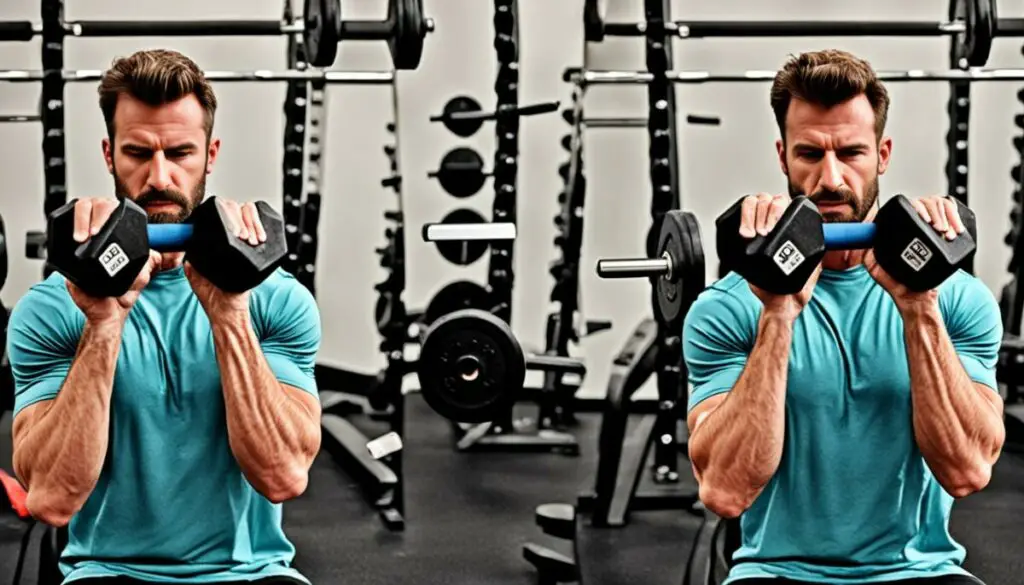
When performing the incline barbell bench press, it’s important to be mindful of common mistakes that can compromise your form and increase the risk of injury. By recognizing and correcting these errors, you can ensure a safe and effective workout. Here are some of the most frequent mistakes to avoid:
- Improper Form: One of the most significant mistakes individuals make is using improper form during the incline bench press. This includes arching the back excessively, which not only diminishes the effectiveness of the exercise but also places unnecessary strain on the lower back. Ensure that your back remains flat against the bench throughout the movement to maintain proper alignment.
- Bar Bouncing: Another common mistake is bouncing the bar off your chest. This reduces the muscle engagement and can lead to injury. Instead, focus on controlled and smooth movements, lowering the barbell to your chest and pausing for a brief moment before pushing it back up.
- Lack of Spotter: Performing the incline bench press without a spotter can be risky, especially when lifting heavy weights. A spotter not only provides an extra layer of safety but can also assist you in reaching failure by offering assistance when needed. Always have a spotter nearby, especially when pushing your limits.
- Back Arching: As mentioned earlier, arching your back excessively is a common mistake. It not only compromises your form but also shifts the focus from your chest muscles to other muscle groups. Keep your lower back in contact with the bench throughout the exercise to ensure proper muscle activation in your chest and shoulders.
- Lack of Pausing: A crucial element of the incline bench press is pausing at the bottom of the movement. This pause increases muscle engagement and helps maintain control. Avoid rushing the exercise and maintain a brief pause at the bottom position before powering the barbell back up.
- Failure to Utilize Leg Drive: Neglecting to engage your leg muscles during the incline bench press can hinder your performance. Utilize leg drive by driving your heels into the ground and pushing your body into the bench. This technique not only stabilizes your body but also provides additional power for lifting heavier weights.
By being aware of these common mistakes and making the necessary adjustments, you can ensure that your incline barbell bench press is effective, safe, and helps you achieve your fitness goals.
Benefits of the Incline Barbell Bench Press
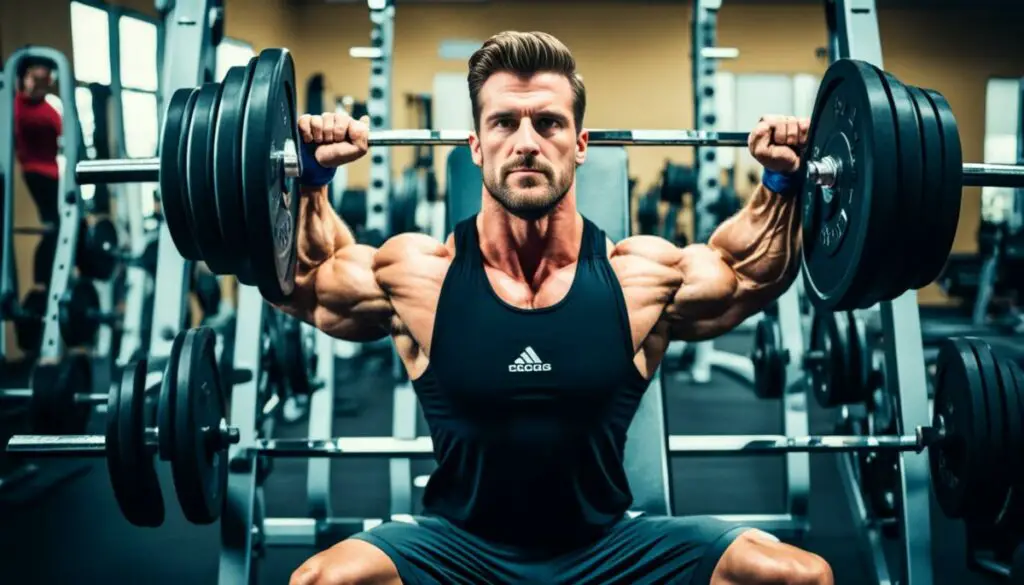
The incline barbell bench press is a highly effective exercise that offers numerous benefits for muscle development and overall strength. Incorporating this exercise into your training routine can help you achieve specific fitness goals and enhance your upper body performance.
Muscle Isolation of the Upper Chest
One of the primary benefits of the incline barbell bench press is its ability to isolate the muscles of the upper chest. By adjusting the angle of the bench and targeting the incline position, you activate the clavicular head of the pectoralis major muscle. This muscle is responsible for the development of a well-rounded chest and contributes to an aesthetic upper body physique.
Increased Size and Strength in the Anterior Deltoid
The incline barbell bench press also engages the anterior deltoid, which is the front part of the shoulder muscle. By performing this exercise, you effectively stimulate the anterior delts, leading to increased muscle size and strength in this area. This not only contributes to an impressive shoulder appearance but also improves overall upper body functional strength.
Improved Overhead Lifting Capabilities
Another notable benefit of the incline barbell bench press is the impact it has on increasing overhead strength. As you perform the incline press, your shoulders and triceps are engaged and strengthened, making you more capable of executing exercises that involve lifting weights overhead, such as military presses and overhead presses. This translates to enhanced performance in a variety of activities, from weightlifting to functional movements.
| Benefits of Incline Barbell Bench Press |
|---|
| Muscle isolation of the upper chest |
| Increased size and strength in the anterior deltoid |
| Improved overhead lifting capabilities |
By incorporating the incline barbell bench press into your training routine, you can unlock its benefits and experience substantial improvements in upper body muscle development and strength. Whether your goal is to build a well-defined chest, strengthen your shoulders, or increase your performance in overhead lifts, the incline barbell bench press is a highly effective exercise that should not be overlooked.
Incline Bench Press Variations
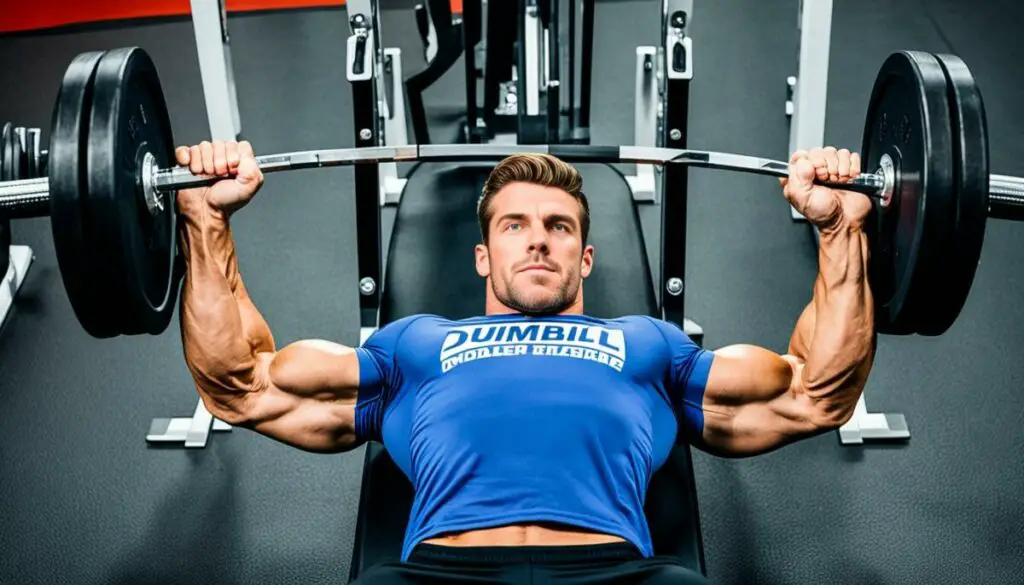
In addition to the traditional incline barbell bench press, there are several variations that can be incorporated into your workout routine. These variations provide a fresh challenge and target different muscles within the chest, triceps, and shoulders.
Incline Dumbbell Press
The incline dumbbell press is a popular variation that involves using dumbbells instead of a barbell. This exercise allows for greater range of motion and targets the upper chest muscles effectively. To perform this exercise, lie on an incline bench and hold a pair of dumbbells at shoulder level. Push the dumbbells upward until your arms are fully extended and then lower them back down to the starting position.
Hammer Strength Machine Press
The hammer strength machine press is another variation that provides stability and control throughout the movement. This machine mimics the motion of a bench press but allows each arm to move independently. By using the hammer strength machine, you can specifically target the muscles of the chest and shoulders. Adjust the seat height, grip the handles, and press the weight forward until your arms are fully extended. Slowly return to the starting position and repeat.
Reverse-Grip Barbell Press
The reverse-grip barbell press is a unique variation that focuses on the lower angle of the chest. This exercise involves using an underhand grip while performing the bench press. Adopt a grip with your hands slightly wider than shoulder-width apart, and lower the barbell to your lower chest. Press the weight back up to the starting position, making sure to engage your chest muscles throughout the movement.
Smith Machine Press
The smith machine press is a useful variation for individuals who may not have access to a spotter. This exercise involves using a smith machine, which has a fixed barbell on a vertical track. Set the bar at a comfortable height and perform the bench press as you would with a barbell. The smith machine provides added stability and control, making it suitable for individuals of all fitness levels.
By incorporating these incline bench press variations into your workout routine, you can add diversity to your training program and target different muscle groups within the chest, triceps, and shoulders.
Training Considerations for Different Athletes
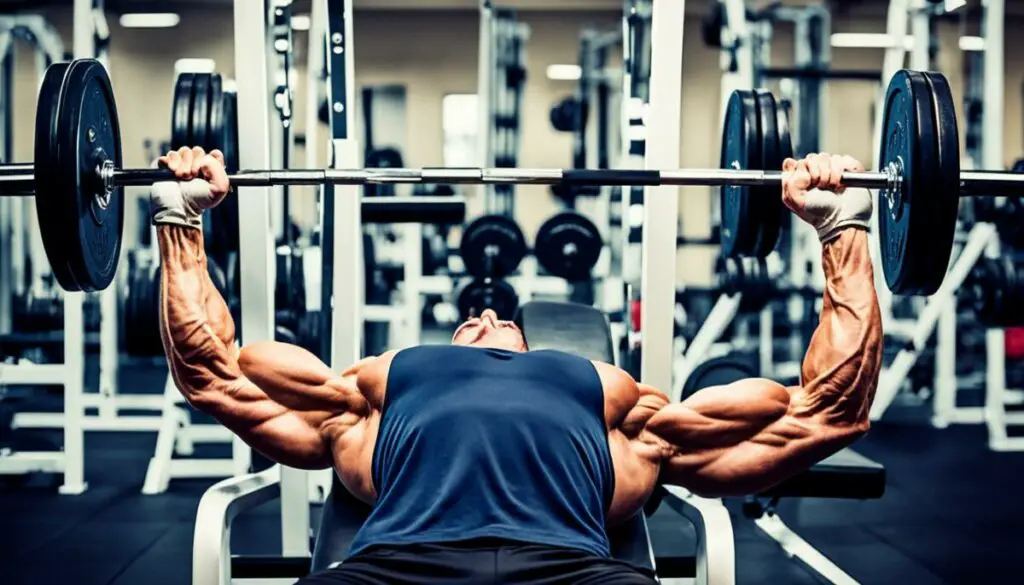
Different types of athletes can benefit from incorporating the incline bench press into their training routines. Whether you’re a powerlifter, weightlifter, or CrossFitter, this exercise can help you achieve specific fitness goals and enhance your overall performance.
Powerlifters
For powerlifters, the incline bench press serves as a valuable tool for bridging the gap between flat bench pressing and overhead pressing. By targeting the upper chest and shoulders, this exercise strengthens the muscles necessary for controlled and explosive movements during competition. It can also help develop stability and improve overall pressing strength.
Weightlifters
Weightlifters can greatly benefit from incorporating the incline bench press into their training program. This exercise helps strengthen the chest, shoulders, and triceps, which are crucial for generating upward force and explosiveness during lifts. The incline bench press also aids in improving upper body stability, allowing weightlifters to execute quick and forceful movements with precision.
CrossFitters
For CrossFitters, the incline bench press is a valuable addition to their training routine as it enhances chest and shoulder strength, which are essential for various gymnastic movements. By incorporating this exercise, CrossFitters can improve their upper body stability, muscle endurance, and overall performance in functional fitness workouts.
| Athlete Type | Training Considerations |
|---|---|
| Powerlifters | – Use incline bench press to bridge the gap between flat bench pressing and overhead pressing – Emphasize upper chest and shoulder engagement – Focus on controlled and explosive movements |
| Weightlifters | – Strengthen chest, shoulders, and triceps for generating upward force – Improve upper body stability for quick and forceful movements |
| CrossFitters | – Enhance chest and shoulder strength for gymnastic movements – Improve upper body stability and muscle endurance – Incorporate incline bench press into functional fitness workouts |
Incline Dumbbell Bench Press Technique
The incline dumbbell bench press is a highly effective variation of the incline bench press exercise. Instead of using a barbell, this exercise utilizes dumbbells, allowing for a greater range of motion and increased muscle activation.
To perform the incline dumbbell bench press:
- Start by adjusting the bench to a 30-45 degree incline.
- Lie back on the bench with a dumbbell in each hand, palms facing forward. Position the dumbbells at shoulder level, with your upper arms parallel to the floor.
- Engage your core and press the dumbbells upward, extending your arms fully while maintaining control.
- Pause briefly at the top, squeezing your upper chest muscles.
- Lower the dumbbells back down to shoulder level, keeping your elbows slightly bent to prevent strain on the joints.
- Repeat for the desired number of repetitions.
The incline dumbbell bench press is particularly effective for targeting the upper chest muscles, promoting balanced muscle development in the chest, shoulders, and triceps.
Benefits of the Incline Dumbbell Bench Press:
- Upper Chest Development: The incline angle of the bench places a greater emphasis on the upper chest muscles, helping to build a well-rounded chest.
- Muscle Imbalance Correction: Many individuals have muscle imbalances between their chest and shoulders. The incline dumbbell bench press helps correct these imbalances by targeting the upper chest and shoulders simultaneously.
- Core Engagement: To maintain stability during the exercise, your core muscles must engage to support your upper body. This helps strengthen your core and promote overall stability.
By incorporating the incline dumbbell bench press into your workout routine, you can effectively develop your upper chest, address muscle imbalances, and enhance core engagement for improved strength and aesthetics.
Hammer Strength Incline Machine Press Technique
The hammer strength incline machine press is a highly effective exercise for targeting the upper chest, shoulders, and triceps. This variation of the incline bench press utilizes a machine, providing added stability and control throughout the movement.
To perform the hammer strength incline machine press with proper technique:
- Adjust the seat height: Position yourself on the machine so that the handles are at chest level. This ensures optimal range of motion and muscle activation.
- Grip the handles: Grasp the handles firmly, ensuring a comfortable and secure grip. Your palms should be facing forward.
- Position yourself: Sit back and lean into the machine, with your back firmly against the padding. Keep your feet flat on the floor for stability.
- Engage your core: Activate your core muscles by slightly bracing your abs throughout the exercise. This helps maintain proper form and stability.
- Begin the movement: Push the handles forward and away from your chest until your arms are fully extended, but avoid locking your elbows.
- Control the negative phase: Slowly and under control, bring the handles back toward your chest, allowing the weight stacks to descend. Maintain a controlled pace throughout the exercise.
- Focus on your upper chest: Visualize squeezing your upper chest as you press the handles away from your body. This will help activate and engage the targeted muscles.
- Feel the shoulder and triceps activation: During the pressing phase, pay attention to the activation in your shoulders and triceps. These muscles should be working synergistically with the upper chest.
By incorporating the hammer strength incline machine press into your chest workout routine, you can effectively target the upper chest, increase upper chest volume, and activate the shoulders and triceps. This machine exercise is an excellent alternative to the traditional incline bench press, providing additional stability and control throughout the movement.
Conclusion
Mastering the technique of the incline barbell bench press is crucial for optimizing upper body strength and promoting muscle growth. By following the proper form and technique, individuals can effectively target their upper chest, shoulders, and triceps while minimizing the risk of injury. Moreover, incorporating variations of the incline bench press and tailoring the exercise to the specific needs of different athletes can further enhance its benefits.
Consistent practice, backed by expert guidance, is key to achieving your fitness goals with the incline barbell bench press. Whether you’re looking to increase upper body strength or improve muscle definition, focusing on technique mastery is essential. By honing your form and perfecting your execution, you can stimulate muscle growth and make significant progress over time.
Remember, the incline barbell bench press is not only a valuable exercise for strength training enthusiasts but also an effective tool for athletes from different disciplines. Powerlifters, weightlifters, and CrossFitters can all benefit from incorporating this exercise into their training routines, as it targets the muscles necessary for their respective sports.
So, if you’re ready to take your upper body strength and muscle growth to the next level, commit to mastering the technique of the incline barbell bench press. With consistent practice, proper form, and a well-designed training program, you can achieve your fitness goals and unlock your full potential.
FAQ
How does the incline barbell bench press target the upper chest and shoulders?
The incline barbell bench press is performed on an incline bench, which targets the upper chest fibers and shoulders more effectively compared to the flat bench press. The angle of the bench places more emphasis on the upper chest muscles, allowing for greater muscle activation in that area.
What muscles does the incline barbell bench press work?
The incline barbell bench press primarily targets the upper chest muscles (pectoralis major), but it also engages the shoulders (anterior deltoids) and the triceps. This exercise is a compound movement that utilizes multiple muscle groups in the upper body.
How can I perfect my technique in the incline barbell bench press?
To master the incline barbell bench press technique, it’s essential to focus on proper form and execution. Some key tips include maintaining a stable back position, using an appropriate grip width, controlling the lowering of the barbell, and pressing the weight back up with power and control. Make sure to activate your targeted muscles effectively by squeezing your chest and shoulders at the top of the movement.
What are the common mistakes to avoid in the incline barbell bench press?
There are several common mistakes individuals often make when performing the incline barbell bench press. These include arching the back, bouncing the bar off the chest, not using a spotter, not pausing at the bottom, and neglecting to utilize leg drive. Correcting these mistakes can help ensure safe and effective execution of the exercise.
What are the benefits of incorporating the incline barbell bench press into my training routine?
The incline barbell bench press offers several benefits, including targeted muscle isolation of the upper chest, increased size and strength in the anterior deltoids, and improved overhead lifting capabilities. It can also contribute to overall upper body strength and muscle development when combined with a well-rounded fitness routine.
Are there variations of the incline barbell bench press that I can incorporate into my workout routine?
Yes, there are several variations of the incline barbell bench press that you can incorporate into your workout routine. These include the incline dumbbell press, hammer strength machine press, reverse-grip barbell press, and smith machine press. Each variation offers a unique challenge and targets different muscles within the chest, triceps, and shoulders.
How can different types of athletes benefit from incorporating the incline barbell bench press?
Different types of athletes can benefit from incorporating the incline barbell bench press into their training routines. Powerlifters can use the exercise to bridge the gap between flat bench pressing and overhead pressing. Weightlifters can strengthen the muscles necessary for quick and forceful movements. CrossFitters can improve their chest and shoulder strength for various gymnastic movements.
How do I perform the incline dumbbell bench press correctly?
The incline dumbbell bench press is a variation of the incline bench press that involves using dumbbells instead of a barbell. The technique involves maintaining proper upper chest alignment, controlling the dumbbells throughout the movement, and engaging the core for stability. This exercise is beneficial for upper chest development, addressing muscle imbalances, and engaging the core.
How do I perform the hammer strength incline machine press correctly?
The hammer strength incline machine press is another variation of the incline bench press that utilizes a machine for added stability and control. This exercise requires proper seat height adjustment, proper handle grip, and focus on targeting the upper chest, shoulders, and triceps. Incorporating this machine exercise into your chest workout routine can provide additional volume and activation in the targeted muscle groups.
What are the key takeaways for mastering the incline barbell bench press?
Mastering the technique of the incline barbell bench press is essential for optimizing upper body strength and muscle growth. By following proper form and technique, individuals can target the muscles effectively and reduce the risk of injury. Incorporating variations of the incline bench press and considering the specific needs of different athletes can further enhance the benefits of this exercise. With consistent practice and proper guidance, individuals can achieve their fitness goals and improve their overall upper body strength.

